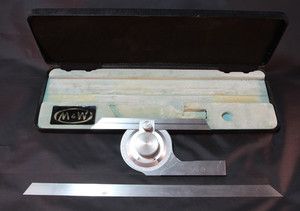Been thinking it's about time I got something a little more accurate than I have at present but which one? They are both on this page:
http://www.arceurotrade.co.uk/Catalogue/Measurement/Squares-Angle-Gauges-Protractors
I quite like the "Precision Universal Vernier Protractor - Satin Chrome" New Low Price!
or there's the "Dial Universal Bevel Protractor" just above it. What do the experts think and why - or, seen anything better? UK
Vic.
http://www.arceurotrade.co.uk/Catalogue/Measurement/Squares-Angle-Gauges-Protractors
I quite like the "Precision Universal Vernier Protractor - Satin Chrome" New Low Price!
or there's the "Dial Universal Bevel Protractor" just above it. What do the experts think and why - or, seen anything better? UK
Vic.

















































![DreamPlan Home Design and Landscaping Software Free for Windows [PC Download]](https://m.media-amazon.com/images/I/51kvZH2dVLL._SL500_.jpg)




















